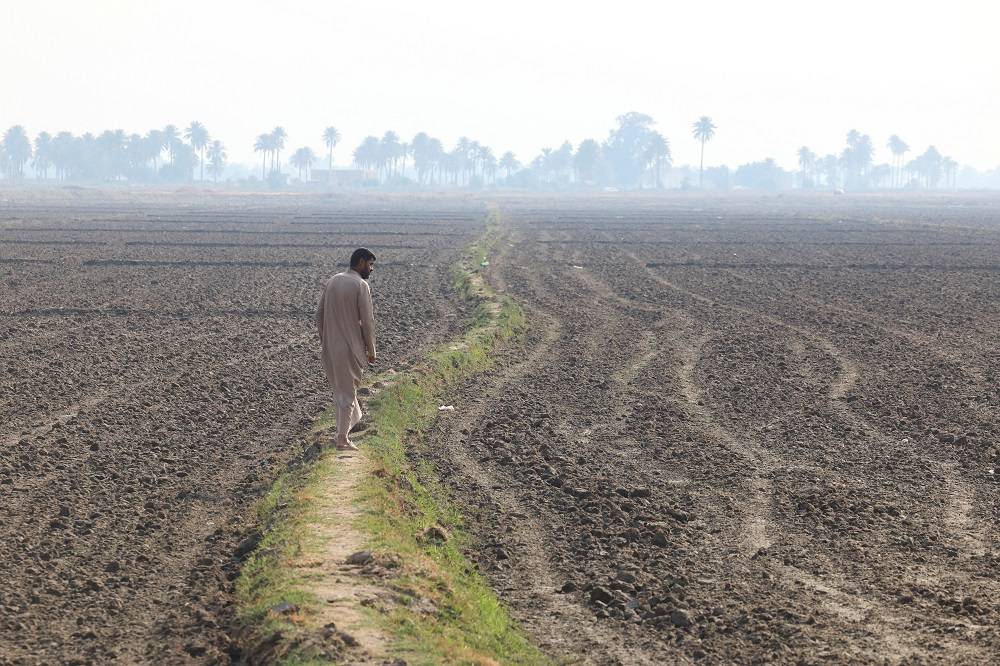It is noon in Kharkiv. Ukrainian artillery near the western parts of the city launches several howitzers, setting off dozens of car alarms. They ring for several minutes before their owners can silence them. This happens every hour or so in the almost deserted city.
In central Kharkiv, a bank was destroyed overnight and no one is longer around to turn off its alarm. Less than a kilometer away, three members of the Ukrainian army inspect the identities of pedestrians. They have set up cement barriers aimed at impeding the advance of tanks. One speaks fluent English and spoke to Asharq Al-Awsat about the developments in the central part of the city.
The central shopping district of Kharkiv was a source of massive pride for the locals due to its beauty. Every day, it gets its daily dose of Russian rockets. Not much glass remains in the city center. Most of it has been blown away by the bombardment. Only the military museum appears intact. It is difficult to discern the shattered glass on the ground from the ice that still covers the pavements.
You can walk for several minutes in Kharkiv without coming across a single soul. The city is almost deserted. A policeman on Poltavskyi Shliakh Street points to a small souvenir stall, saying: "This is all that's left on this street. Everyone is gone."
At a train station, several residents have gathered to leave the city. Waves of people are leaving as battles edge closer to the outskirts of Kharkiv. The attacks have struck neighborhoods indiscriminately.
At the main train station, hundreds are waiting for their ride to take them to Kyiv and from the capital to other cities or European countries.
The villages to the west and south of Kharkiv are still busy with people. Long lines form in front of shops as people wait to buy essentials. In Kharkiv, however, there are no lines, you hardly find a small grocer to buy some food. You barely even find anything to buy.
Stray and abandoned cats and dogs roam the streets after their owners fled the strikes and advancing Russian tanks. The pets have become the daily entertainment for policemen as they await pedestrians to inspect their IDs.
The sound of shelling can be heard throughout the day. "Some parts of the city have been completely destroyed," said Vitaly, 28. He identified himself as a military volunteer. He revealed that he is facing financial difficulties after he lost his job due to the war. He lives with fellow fighters and makes do with whatever food and water that is available.
Many things are now free in Kharkiv. You can get a hotel room for free if you are lucky to find a hotel that is not destroyed or still receiving guests. You can get food, tea or coffee at train or metro stations. Free clothes are available at several volunteer gathering points if you can stand out in line in the biting cold for long enough.
Obtaining essentials for free does not mean that the city is doing well. Several goods are unavailable and prices have varied from city to city. The price of bread has doubled in recent days in Kharkiv.
The remaining residents of Kharkiv are also suffering from a lack of hard cash. The ATMs have stopped working and those that are, are not being replenished.
Local authorities have sought to remove the traces of the shelling as soon as it is safe. They work on reopening streets and removing rubble, but they cannot always keep up with the Russian attacks. In the central part of the city, electricity lines are left dangling on their poles and piles of shattered glass and destroyed cement blocks are scattered around. Several neighborhoods in eastern and northern Kharkiv, even its center, are without electricity after the network malfunctioned, forcing many residents to leave.










